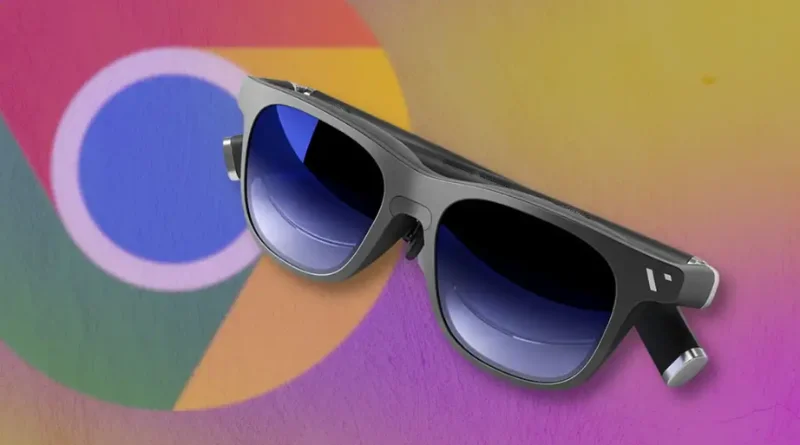The Spatial Computing Revolution: Apple’s Vision and ChromeOS Potential
Embracing the Future
In the early months of 2024, Apple and ChromeOS unleashed its ambitious take on spatial computing through a new VR/AR headset. While skeptics may dismiss it as a face-mounted Macbook with a hefty price tag, the underlying concept hints at a future where computing transcends traditional boundaries. The dream of spatial computing, akin to Tony Stark’s unassuming glasses, may seem far-fetched, but technological breakthroughs could turn this dream into reality.
2. Overcoming Physical Limitations
Apple’s current spatial computing endeavor faces practical challenges – a large headset, limited battery life, and a hefty price point. However, the concept itself is undeniably intriguing. The dream scenario involves seamlessly integrating computing into everyday wearables, much like Tony Stark’s unobtrusive glasses.
3. ChromeOS: A Surprising Contender
Enter ChromeOS, an unexpected yet promising contender in the spatial computing arena. The key to wearable technology’s success lies in its compact, self-sufficient nature. Unlike early VR headsets with cumbersome wires, the evolution towards untethered experiences is evident. ChromeOS could play a vital role in this evolution, given its lightweight architecture and the recent emergence of pocket-sized Chromeboxes.
4. Unleashing ChromeOS Potential
Imagine a device the size of a modern smartphone, equipped with a battery, motherboard, and everything needed to run ChromeOS. Tethered to sleek glasses, this setup provides a lighter, more user-friendly all-day computing solution. With the advent of millimeter wave technology, wireless connectivity between the pocket-sized Chromebox and glasses has become a viable reality.
5. The Journey Toward Normal-Looking Glasses
While the prospect of fitting a tiny motherboard into standard-looking glasses remains futuristic, technological advancements in processors, batteries, and displays are propelling us closer to this vision. ChromeOS, with its user-friendly interface and lightweight design. Emerges as a fitting companion for less powerful Systems on Chips (SoCs) that will likely drive this transformation.
6. ChromeOS: The Crazy-Good Fit
As the spatial computing landscape evolves, ChromeOS stands out as a potential catalyst for a seamless user experience. Its simplicity, lightweight nature, and compatibility with various app platforms make it an excellent candidate for the gradual convergence of technology toward wearable computing. While the future remains uncertain, envisioning a world where your face becomes the canvas for a Chromebook is an exhilarating thought.
In this journey towards a spatial computing future, the fusion of innovative hardware and intuitive operating systems like ChromeOS could redefine how we perceive and interact with the digital realm. So, buckle up for the ride, as the future of computing may just be a pair of glasses away.
7. The Allure of Unseen Possibilities
Picture this: a world where computing seamlessly integrates into the fabric of everyday life, hidden within the unassuming frames of your glasses. Apple’s spatial computing leap and ChromeOS’s unexpected potential pave the way for a future where technology becomes an extension of self, not a cumbersome accessory.
8. Unleashing the Power of ChromeOS
ChromeOS, often associated with simplicity and efficiency, emerges as an unsuspected hero in this narrative. The compact Chromebox, pocket-sized and powerful, could be the cornerstone of a revolution. Tether it to your sleek glasses, and suddenly, you’re equipped with a lightweight, all-day computing solution that doesn’t compromise on performance.
9. Breaking Free from the Tether
Gone are the days of being shackled by wires. The marriage of millimeter wave technology and ChromeOS ensures a wireless connection, liberating users from the restrictions of physical connections. A device the size of a smartphone, tucked away in your pocket, becomes the beating heart of your spatial computing experience.
10. ChromeOS: The Future-Ready Companion
As we inch closer to a future where glasses house the computing power once reserved for bulkier devices, the choice of an operating system becomes pivotal. ChromeOS, with its user-friendly interface and adaptability to evolving technologies, emerges as the perfect fit. In a landscape where sleekness and functionality collide. ChromeOS stands poised to be the driving force behind the next computing revolution.
11. From Dreams to Reality
While the idea of Chromebooks residing on your face might seem like a fantastical notion, the trajectory of technological evolution suggests otherwise. As processors. Batteries, and displays continue to shrink in size and advance in capabilities, the dream of normal-looking glasses housing a powerful computing experience may not be as far-fetched as it sounds.
12. ChromeOS: An Exciting Chapter Unfolding
In the grand tapestry of technological progress, the role of ChromeOS in shaping the future of spatial computing is an exciting chapter. It’s a narrative where simplicity meets sophistication, where the unobtrusive becomes the extraordinary. The allure of a Chromebook adorning your face during the day might be speculative now. But the journey toward this potential reality promises to be nothing short of thrilling.
So, as we navigate the evolving landscape of spatial computing, keep an eye on ChromeOS. It may well be the unsung hero in the story of how we wear and interact with technology, ushering in a new era where the extraordinary becomes the everyday.
“As we conclude this mrprecious journey, immerse yourself in the latest Mr precious wonders across tech, Gemstones, sports, Cars, Quotes, and health. From groundbreaking tech trends to captivating, thrilling sports moments, and essential health insights, Mr preciousis your ultimate destination. So, until our next Mr precious update, stay mrprecious. Stay engaged, and keep thriving in the dynamic world of Mr precious Innovations!”

